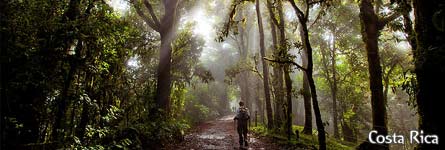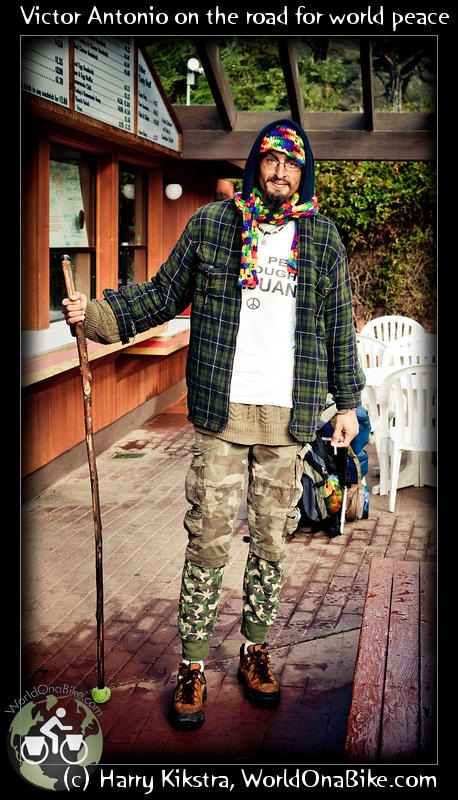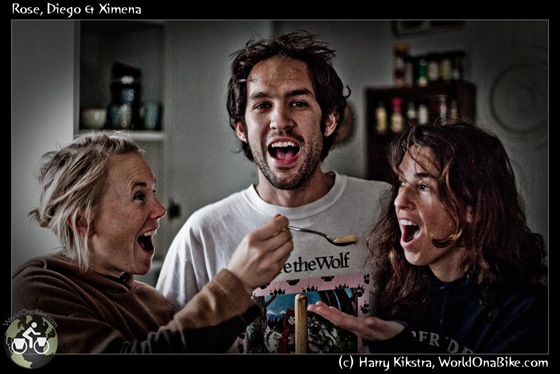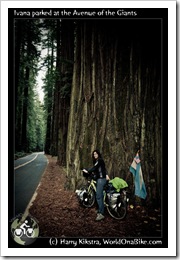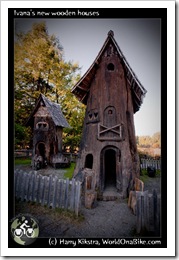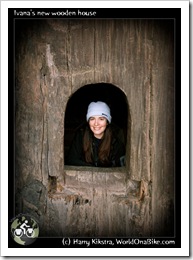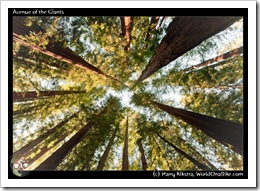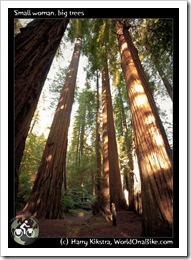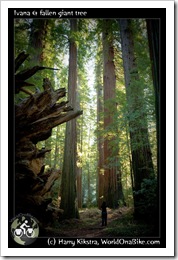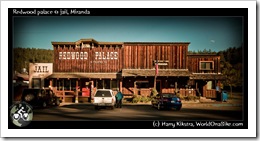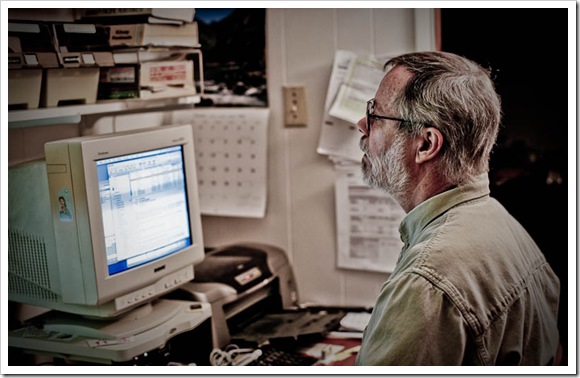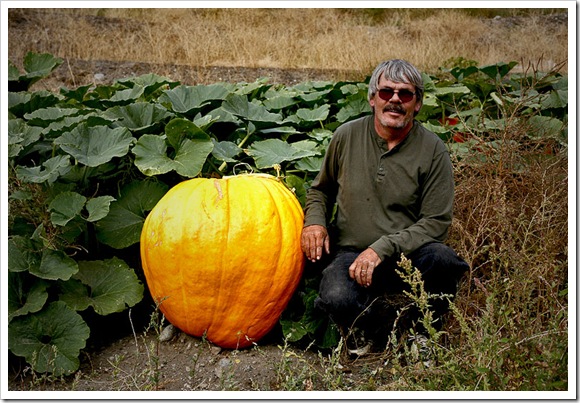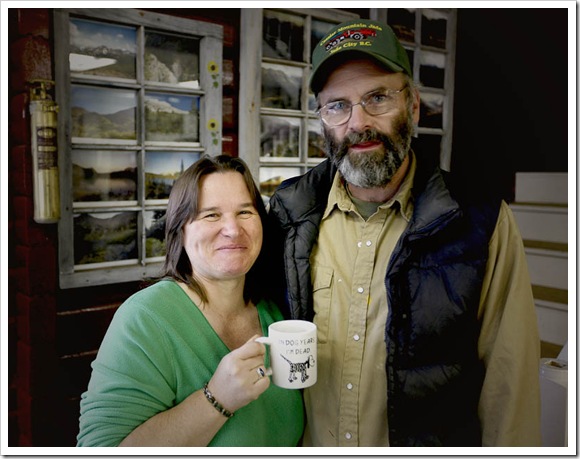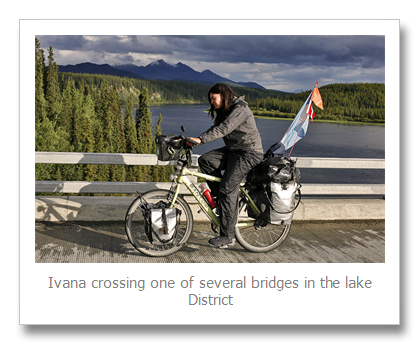1000 Americans: Matt & Rita, San Luis Obispo
February 13, 2009 by Harry, 1,168 views
Filed under 1000 Americans, Go green
Matt & Rita are avid cycle tourists, having toured by bicycle in Italy, The Netherlands, Germany, Canada, Australia and the US. They actively promote cycling and are members of the San Luis Obispo Bicycle Club and the San Luis Obispo County Bicycle Coalition.
Matt & Rita were perfect hosts. Even though we arrived last minute, they put us up and cooked a great meal to top it. Ivana tested out their tandem-recumbent and it was fun to talk about all our trips together.
The next day they cycled out with us, which was great as they were showing us much better routes and a great fish-tacos bar ![]()
Thanks Matt & Rita!
1000 Americans: Victor Antonio, peacemaker
February 12, 2009 by Harry, 1,612 views
Filed under 1000 Americans, Go green
Victor, originally from Puerto Rico, though he grew up in San Antonia, Texas, has been on the road for a while, walking to promote peace through Marijuana.
This is how he describes his mission, taken from his website http://HaveThisBook.com
I am a self employed long-distance walker/journalist.
With the Internet I have discovered a way to fight the world’s greatest problem. What would you say that is? Of all time. Where it all starts. Well, more like humanity’s greatest problem. The world can shake us off.
I say it’s ignorance. Ignorance is the root of all problems, if you ask me. Nobody listens. We’re not learning. We are stuck. The technology is here, the facts have been staring us in the face for decades . . . but we still insist on killing the world and ourselves because death makes money.
Why doesn’t anybody care?
Well, here is my idea.
With the Internet(and you’re going to think I’m crazy, just like I want you to) I plan to eliminate money, make everything free, prove that it’s human-nature to be generous and bring world peace.
I’m going to get rid of cars in big cities and make everybody healthy(and height/weight proportionate).
AND, not only will I get marijuana totally legalized and chill everybody out…I will get it recommended. It will be growing everywhere.
That’s the key.
I’ve got it all figured out.
I will tell you exactly how I plan to do all this . . . if you are willing to listen, and only then. I wouldn’t want to waste your time. I’ve got a website if you would rather read it. There is a lot to be said for the presentation, though.
Click on ASK ME HOW, on the left column at the top on http://HaveThisBook.com (if you want to).
“There are two ways of spreading light: To be the candle or the mirror that reflects it.” – Edith Wharton
1000 Americans: Rose, Diego & Ximena, Pacific Grove
February 8, 2009 by Harry, 997 views
Filed under 1000 Americans, Go green
Rose, Diego & Ximena are housemates in Pacific Grove, adjacent to Monterey, California. All are active environmentalists, preferring the bike over a car and helping clean the beautiful coast of Monterey bay.
Diego has cycled across Europe and Asia, see his website http://superpedaletos.blogspot.com/ & Ximena has just succeeded in getting styrofoam containers banned in Monterey. It is small initiatives like these that slowly make the world greener, from the bottom up…
Day 152/3, 10/11 Dec 2008: The Avenue of the Giants
December 19, 2008 by Harry, 3,694 views
Filed under California, Go green, North America, Trip reports, USA
 One of the greatest places we have seen on this trip, was dark and cold… Views were very limited, but that was exactly the main attraction as we were cycling on the Avenue of the Giants, a 50 km (31mile) long road through the Humboldt Redwood State Park in Northern California.
One of the greatest places we have seen on this trip, was dark and cold… Views were very limited, but that was exactly the main attraction as we were cycling on the Avenue of the Giants, a 50 km (31mile) long road through the Humboldt Redwood State Park in Northern California.
Only about 4-5% of the original giant trees (Redwoods and Giant Sequoias) are left after the logging activities, and this place is one of the best to enjoy the grandeur of the trees.
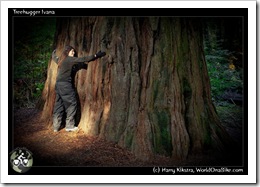 After cycling through thousands of kilometres of forests and nature, we had not expected to be so impressed anymore, but just cycling and walking between these Giants, some over 100 meter high and thousands of years old, made us feel humble and small. It also gave hope that maybe nature can be saved if humans try to do their best as well…
After cycling through thousands of kilometres of forests and nature, we had not expected to be so impressed anymore, but just cycling and walking between these Giants, some over 100 meter high and thousands of years old, made us feel humble and small. It also gave hope that maybe nature can be saved if humans try to do their best as well…
Soon more stories about Northern California, for now I just wanted to share some images of the road, the trees, the villages and the odd tourist attractions. It is hard to put the Giants into perspective, the light is always wrong (or absent) and no photo will ever do justice to the feeling of being there.
Mile 207, Oregon Dunes National Recreation Area: a Trash Rant…
I am about to post several wonderful images of Oregon State, USA. A truly beautiful place. But first I have to get something else off my chest:
<rant> Imagine cycling along one of the most beautiful stretches of coastal nature in the US, maybe even in America. Dunes, forests, cliffs and rough waves. So nice they declared it a ‘National Recreation Area’!
I enjoyed the scenery, but got more and more annoyed with the trash that was on the side of the road. It got so bad that I could not focus on the nature or even on the traffic, but just on the next piece of plastic that had been thrown out of a car window, or maybe I should say truck window?
Besides the ugliness of the trash, the chemicals that are slowly released into nature (by decomposing and by getting eaten by animals), it also creates dangerous situations for cyclists, as many times we have to go around heaps of glass or large pieces of trash, forcing me onto the car lane (assuming there is a shoulder to begin with).
At one point, at the bottom of a steep hill, I decided to take some photographs.
About one mile later, I had about 75 pictures of discarded trash, all taken within 45 minutes of uphill cycling (some more were shot after lunch, one hour later). Please take the following facts in account:
- I only started shooting after I got really annoyed by all the trash, so there were hundreds pieces more, just before this series.
- All first 75 shots were taken within 45 minutes; this includes cycling uphill, getting off the bike, releasing the flap of my handlebar-bag, getting the camera ready, taking a picture and getting moving again. Mostly I could do only a few pedal strokes before stopping again.
- Many pieces are missing. Only halfway up I started to shoot ‘doubles’, before, I passed items if I already had shot them. Missed Doubles (or triples) include red Bull, Coca Cola, Camel cigarettes, all Beers Of Idiots (see below) and more
- I did not shoot most unrecognizable and/or unbranded pieces of trash, such as random car parts, plastic wrappers of all kinds and sizes, unrecognizable glass items and much, much, much more…
- The road was steep on my side, the side of this trash, so likely a multitude of trash was to be found lower down the slope
- It was busy and there was no good shoulder, so I could not stop for every piece.
- Image #27 is the one in the middle: Scenic Byway… Besides this sign, there had also been a ‘Adopt-A-Highway sign before I started shooting.
- I only shot one side of the road.
Here is it: all the glory of Mile 207, Oregon (click image for larger version)
Conclusions:
Not all of the below are scientifically proven or valid, but it after cycling several thousand kilometers along the US highways, it is reasonable safe to assume that:
- There are hundreds pieces of trash per mile of US Highway, even though it is in a ‘National Recreation Area’
- Coors & Bud (especially light) are the choice of beer for trash-throwing idiots
- There is just as much ‘healthy’ trash (waters such as Dasani, Aquafina, ArrowHead (with ‘Eco-Shape bottle’!), V8, VitaminWater etc) as there is stuff that was already trash to begin with (KFC, McDonalds, Taco Bell, BurgerKing etc etc)
- Drive-thru coffee creates throw-away empty coffee trash.
- Adopt-a-Highway seems nothing more than a scam where local businesses get some advertising and never look at ‘their’ road again. There were some exceptions in the US (especially notably when the Adopter was a Bikeshop or Eco-market etc), but generally those signs only seemed to attract trash as the idiots throwing things out of their car, seem to need something to aim for..
I assume that the crazy fools that throw these things out of their car window (trust me, they are NOT cyclists…) have zero respect for nature also have no respect for others or even themselves, as they are messing up their own planet. Is is just education? lack of proper values taught by their parents? Or just plain stupidity? I really wonder what goes on in their minds if anything at all.
Some places have a sign that says: ‘$1000 fine for littering’. This means that if one person was stationed here, he could have raised at least $80,000 in fines (likely a multitude) on this one mile alone. I think that will cover his salary? How’s that for job creation?
< / rant>
Water: refill, not landfill please…
November 19, 2008 by Harry, 1,609 views
Filed under Go green, Tips & Tricks
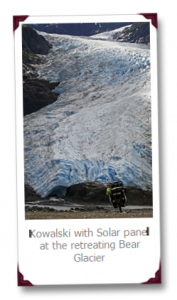 When cycling down from Alaska, we often asked passing RV’s for some water. We noticed that most of the time, people were carrying trays and trays of small 0.5l (16oz) bottles of water, which we normally refused. It appears that not many people are realizing that:
When cycling down from Alaska, we often asked passing RV’s for some water. We noticed that most of the time, people were carrying trays and trays of small 0.5l (16oz) bottles of water, which we normally refused. It appears that not many people are realizing that:
- You need about 3 liters/ 96oz of water per day, this means 6 empty bottles per person, so a lot of trash
- They pay much more for their water than they should
- Though many say bottled water is ‘safer’, they have no idea if the water is better than that from their taps as ‘sourced’ water does not have to disclose the ingredients…
- ‘Recycling‘ is merely downcycling (see the excellent book ‘Cradle To Cradle’): the bottles are not reused, they are just used as a low quality source for other products that also cannot be recycled, so just a few steps away from being landfill where they will end up..
It has become a habit to buy and take bottles of water (‘hey, water is healthy, right?‘), promoted by the powerful marketing machines of Pepsico & Coca-Cola and the shallow promise of ‘recycling’.
I can tell you that I have been using the same 2 bottles: 1 PolarBottle & 1 1liter waterbottle all the way from Northern Alaska to California. That’s right: just refills, with pure, delicious water. No trash needed… Here is some information that might educate and even surprise you a bit. Most of it is also sponsored by commercial companies like Nalgene (refillable bottles) & Brita (waterfilters), but I rather support those companies that try to pevent more trash.
On the side of this post is a small set of images; all shot within 20 minutes, while cycling uphill, all empty waterbottles, thrown out of cars by ‘healthy’ people…
Facts
| In the United States in 2006, bottled water consumption reached a record 8.3 billion gallons, 185 million gallons of which was imported. The total amount spent on bottled water was over $11 billion. (Beverage Marketing Corp.) | ||
| In contrast to tap water, which is distributed through an energy-efficient infrastructure, transporting bottled water long distances involves burning massive quantities of fossil fuels. Nearly a quarter of all bottled water crosses national borders to reach consumers, transported by boat, train, and truck. (Earth Policy Institute) | ||
| It costs more money to drink bottled water than to put gas in your car–up to five time more–due mainly to its packaging and transportation.(Earth Policy Institute) | ||
| Bottled water companies do not have to release their water-testing results to the public, whereas municipalities do. (Natural Resources Defense Council) |
Links
- Container Recycling Institute
- Earth Policy Institute
- National Resources Defense Council
- U.S. Environmental Protection Agency
- Bottled Water Blues
- Local Drinking Water Information. How is Your Tap Water?
- www.drinktap.org
(from http://www.refillnotlandfill.org/facts.html)
Learn the Facts
(from http://www.filterforgood.com/learn_the_facts.php)
Why is bottled water waste a concern? Here are just a few reasons…
- Americans used 50 billion water bottles in 2006 and sent 38 billion water bottles to landfills, the equivalent of 912 million gallons of oil.1, 2, 3, 4
- If laid end to end, that’s enough bottles to travel from the Earth to the Moon and back 10 times.5 If placed in a landfill or littered, those bottles could take up to 1,000 years to biodegrade.2
- The energy we waste using bottled water would be enough to power 190,000 homes.6
- In 2006, the average American used 167 disposable water bottles, but only recycled 38.1
- Americans used about 50 billion plastic water bottles in 2006. However, the U.S.’s recycling rate for plastic is only 23 percent, which means 38 billion water bottles – more than $1 billion worth of plastic – are wasted each year.1
Ditching bottled water keeps Mother Earth and your wallet green.
- One Brita pitcher filter can effectively replace as much as 300 standard 16.9-ounce bottles. So you can get great-tasting water without so much waste. Talk about refreshing.
- The average Brita pitcher filters 240 gallons of water a year for about 19 cents a day.7 Put in perspective, to get the same amount of water from bottled water would require 1,818 16.9-ounce water bottles a year.8
- For about $10 each, you can purchase a 16-ounce or 32-ounce Nalgene bottle, saving you hundreds of dollars a year on bottled water.
- Hydration at its best – carry the water you need and reduce your impact on the environment – one Nalgene bottle can last for decades, making it easy to stop buying single-serve bottled water to fulfill your everyday hydration needs.
Many people drink bottled water because they believe it to be of a higher quality, cleaner and better-tasting, but that’s not necessarily true.
- In the United States, 24 percent of bottled water sold is either Pepsi’s Aquafina (13 percent of the market) or Coke’s Dasani (11 percent of the market). Both brands are bottled, purified municipal water.1
- If you don’t like the taste of your tap water, try Brita. Nine out of 10 consumers say “Brita clearly tastes better,” according to an in-home usage study. They preferred the taste of Brita water – filtered through pitchers – to tap.9
- Dr. Gina Solomon, a senior scientist at the Natural Resources Defense Council, an environmental advocacy group, told The New York Times that “there is no reason to believe that bottled water is safer than tap water.”10
- In the U.S., public water is regulated by the Environmental Protection Agency (EPA), which requires multiple daily tests for bacteria and makes results available to the public. The Food and Drug Administration, which regulates bottled water, only requires weekly testing and does not share its findings with the EPA or the public.10
Notes/sources:
1. Fishman, Charles. “Message in a Bottle.” Fast Company Magazine July 2007: 110.
2. Arnold, Emily, and Janet Larsen. ” Bottled Water: Pouring Resources Down the Drain.” Earth Policy Institute. 2 Feb. 2006. 28 June 2007.
3. Larsen, Janet. “Bottled Water Boycotts:Back-to-the-Tap Movement Gains Momentum.” Earth policy Institute. 7 Dec. 2007.
4. One oil barrel = 42 gallons (Energy Policy & Planning Office, Ministry of Energy, Thailand)
5. The average 16.9-ounce bottle of water is 8 inches, or .67 feet, tall, meaning 38 billion bottles would cover 25,333,333,333.33 feet, or 4,797,979.80 miles. The distance from the Earth to the Moon is 238,987 miles, so 38 billion bottles could travel from the Earth to the Moon and back more than 10 times.
6. “Not Disposable Anymore.” P.O.V.’s Borders. 2004. PBS.
7. This cost assumes the purchase of a $25 pitcher (one filter included), plus 5 replacement filters at $9 each, for a total yearly cost of $70, or $0.19 cents a day.
8. Each filter produces 40 gallons of water and the average Brita owner uses 6 filters in a year, to produce 240 gallons, or 30,720 ounces, of fresh-filtered water. 30,720 ounces is equivalent to the water found in 1,818 16.9-ounce water bottles.
9. Brita Pitcher System In-Home-Use-Test compared to tap water. 2005
10. Burros, Marian. “Fighting the Tide, a Few Restaurants Tilt to Tap Water.” The New York Times [New York City, NY] 30 May 2007: Section F, Page 1.
1000 Americans: John Williams, Suquamish, USA
October 25, 2008 by Harry, 782 views
Filed under 1000 Americans, Friendly people, Go green
John Williams is a filmmaker that has captured the wonderful colourful life under sea level. He has shown flora & fauna of all sizes, colours and types, but maybe the most interesting thing is that most of this was shot jus in his own ‘backyard’: the Puget Sound, the busy body of water separating Seattle from the Western Part of Washington State.
Many of his films are used for educational purposes, which might help preserve the wonderful world that so few people know about…
See more about John and the programs he made, on his website http://www.stillhopeproductions.com/
1000 Americans: Mike Rice, Hilltop gardens, Thompson Valley, British Columbia
October 4, 2008 by Harry, 466 views
Filed under 1000 Americans, Go green, Tips & Tricks
‘Somehow it just gets warmer here than anywhere around in BC. We tried growing some chili peppers this year and they do great. Currently we have so much fruit that needs to be picked, problem is to find people helping us!”
“Most of it is completely organic, but to get certified costs too much, it is not worth it…”
Tip for cyclists: when going down through BC and passing the Thompson valley (between Prince George & the Fraser Canyon leading to Vancouver), reserve a week to work for Mike, anytime between August & October. He will supply a free camp ground with showers and you can make $100/day picking apples, peppers and all kinds of other fruits and veggies. It is a beautiful area, so it might be nice to stay for a week or so and make enough to go biketravelling for more than 2 months…
1000 Americans: Claudia & Robin, Jade City, British Columbia
September 4, 2008 by Harry, 1,195 views
Filed under 1000 Americans, Friendly people, Go green
“In dog years I’m dead” reads Claudia’s mug. Though originally from Yugoslavia, she had been living in BC for a long time. Together with Robin she runs the Jade City store (officially the Cassiar Mountain Jade Store LTD) and we spend a lot of time chatting together about Jade, BC, Canada and Mount Everest…
They give a whole new meaning to “Go Green”, as everything is made from Jade…
Day 47- 52: Aug 27 – Sep 1: Anarchy, Argentineans & gasguzzlers in Nugget City
September 2, 2008 by Harry, 1,646 views
Filed under British Columbia, Canada, Go green, North America, Trip reports, Yukon
It was hard to leave Tracy & Sylvester as we had felt so much at home in their place, but we had to hit the road, winter was catching up…
We managed to delay ourselves until about 16.00 in Whitehorse and then left in a terrible downpour, and as the first few km were steep uphill to get out of the valley, we were feeling down. But the sky stopped dumping water on us and soon we found ourselves going up and down over rolling hills besides more Wonderful Lakes. We had set ourselves a new goal: get to Scott’s Anarchy Farm! We had met Scott in the Potlatch (see previous post here) and he had invited us to visit him when we would pass.
Unfortunately he was not in the Greenhouse: a big plastic covered collection of wonderful smelling flowers and vegetables. We waited outside for some moments and cycled around in the area, but as we did not had the directions to their house, we returned to the greenhouse. The rain started again, and we decided to sleep inside the greenhouse, setting up our inner tent only. It was by far the best smelling campsite on our entire trip.
In the middle of the night we heard some noises and Scott came in. He did not seem to surprised to see us sleeping in the middle of hundreds of flowers and added one more log to the slow burning woodstove, so the temperature stayed above freezing.
The next morning he came back with coffee. A few weeks later he sent us a great poem, please check it out here on his 1000 Americans page. We stayed close to the warm fire all morning and only after noon, we packed our tent and continued riding through the rainy Yukon lake District. The wind was friendly and even with our late starts we did over 100 km, ending up late at a deserted state campground, close to Teslin lake.
August 28 – 30: through the lake District with Mate & tortas
We had promised ourselves to start earlier, and actually managed to get on our bikes before 8 ‘o clock! We arrived quickly at the small place of Teslin, where we spend several hours in the library. We were surprised at the many small libraries we met, there is so much great stuff to see and hear, most offer Internet access and the ladies running them are without exception all nice and friendly, so support your local Library and get your kids to read!
We spend some time in the Teslin Motel, working on our reports and chatting with Heather, who was on her way North, on a big BMW motorbike (see her picture here). We fixed her iPhone for her and chatted with this lovely woman, who was in great spirit.. Do not pass the Motel without seeing the hidden gem: a small museum with stuffed animals in the gift shop (some of Ivana’s images are on Flickr here). This sounds much worse than it is, they have done a wonderful job. Oh, and the Wifi is free at the Motel ![]()
Ivana managed to cross the scary and long bridge, which had a steel bottom, through which you could see water below. As with most rivers, we had to climb a steep hill to get out of the valley it had created, but during the climb a van stopped. Read more


